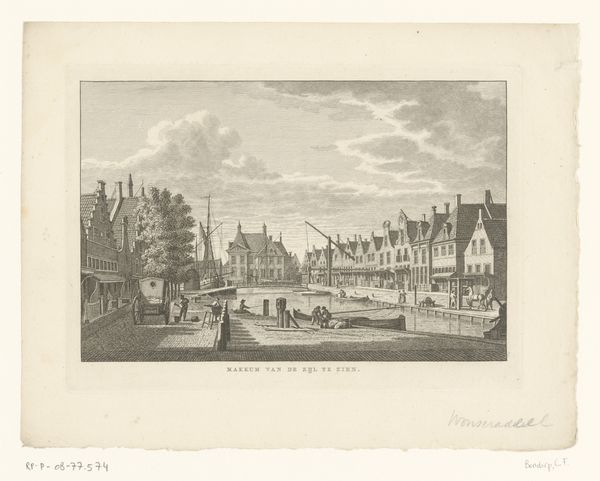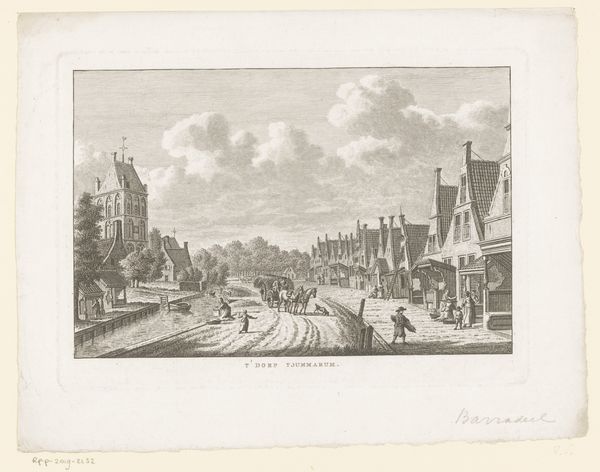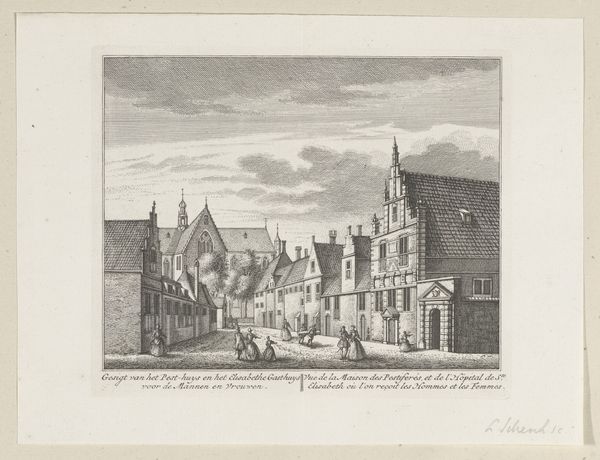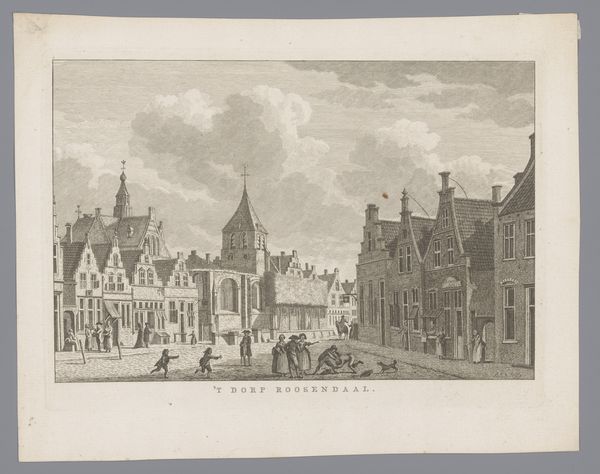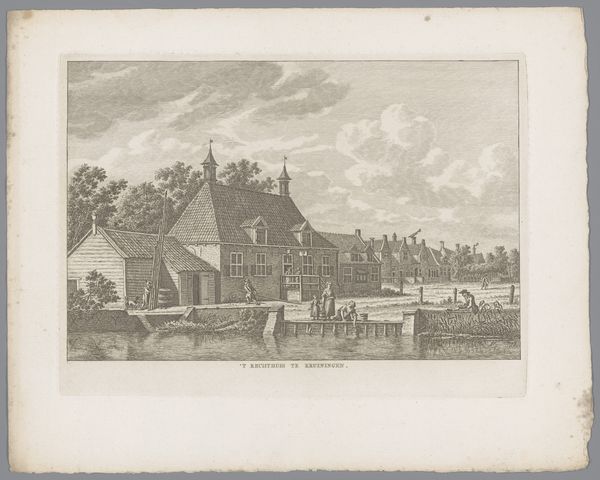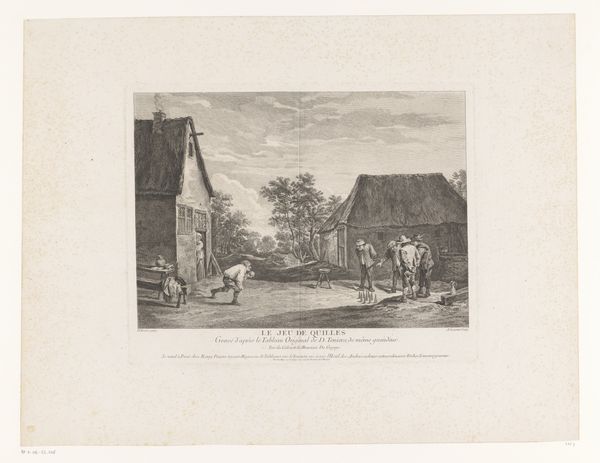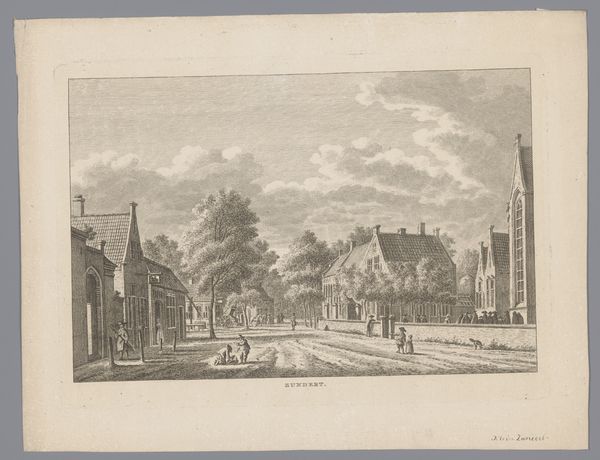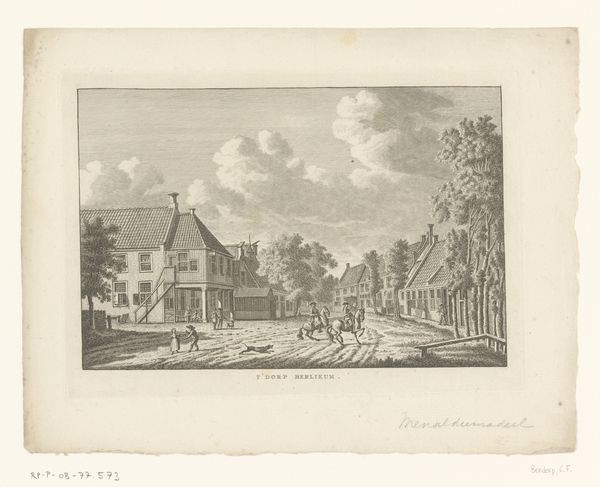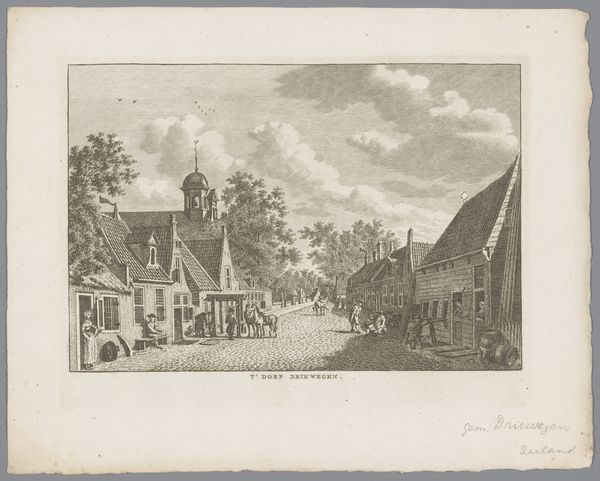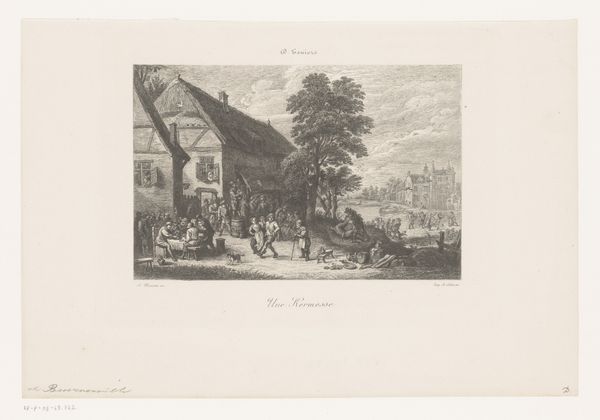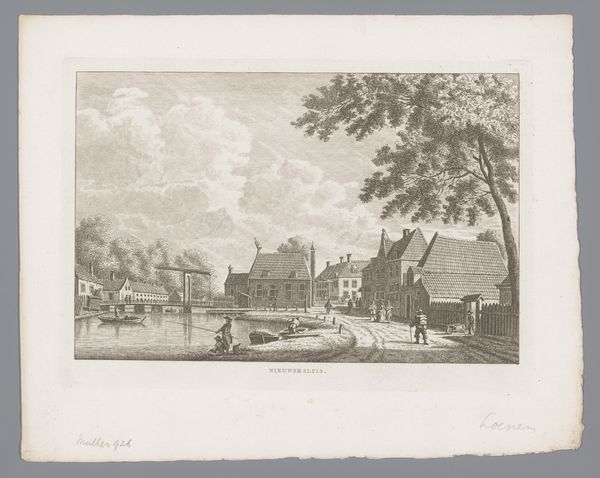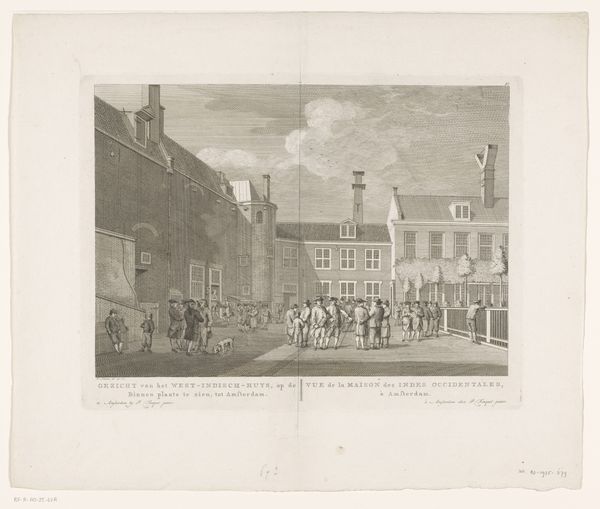
print, etching
#
dutch-golden-age
# print
#
etching
#
landscape
#
perspective
#
line
#
cityscape
#
genre-painting
#
realism
Dimensions: height 178 mm, width 246 mm
Copyright: Rijks Museum: Open Domain
Curator: Let’s discuss this print by Carel Frederik Bendorp, titled "Dorpsgezicht te Arum," created between 1786 and 1792. Editor: The village feels so... peaceful, almost idyllic. There's a gentle cadence to the placement of buildings receding into the distance that invites a wandering eye, don't you think? Curator: Certainly. Bendorp employs line and perspective meticulously. Observe the architectural precision – how each building, rendered through fine etching, contributes to the overall sense of depth. Note how the orthogonals converge towards a vanishing point in the distance. Editor: That convergence feels more than simply perspectival, wouldn't you say? It draws the eye into the very heart of Dutch village life—all its domestic symbolism laid bare. Water being drawn, laundry airing—the simple piety of labor, isn't it? A dog runs about freely, hinting at domestic fidelity. Curator: Indeed, but I find equal significance in the relationship between the void and the form, the interplay between shadow and light. These oppositions, the stark lines contrasting with blank space, reinforce a spatial hierarchy within the frame. Editor: Though it also echoes the Dutch mastery of land reclamation – a culture literally defining itself against negative space. The village, wrested from watery chaos, becomes a symbolic expression of social order and industrious triumph over nature. It is civilization, etched sharply in line. Curator: I concede there is cultural encoding at play. Even in his treatment of skies – wispy suggestions of form instead of dramatic clouds. It resists emotional distraction from the linear structure of the foregrounded landscape. Editor: These quiet skies give emotional context to labor and faith. Perhaps Bendorp meant to connect a solid foundation in commerce with this imagery, but what could be more reliable as a cultural foundation than faith in your fellow village members? What he created seems both earnest and enduring to me. Curator: Perhaps, yet through our discussion, I come to see the fusion of geometrical construction with the projection of communal values as crucial for comprehending this Dutch village. Editor: And, for me, its enduring power stems not only from skilled artistry, but also its invocation of deeply seated beliefs about work, hope, and home.
Comments
No comments
Be the first to comment and join the conversation on the ultimate creative platform.
